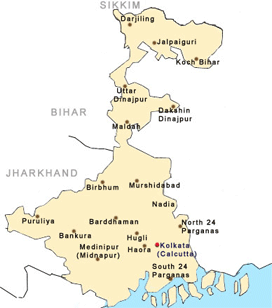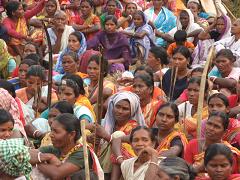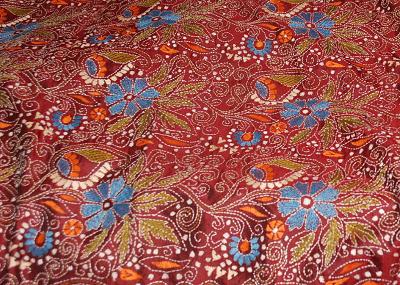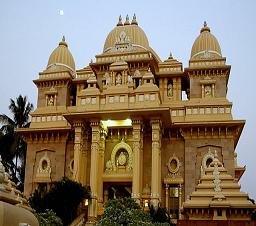
Welcome |
|
|
|
|
|
|
|
|
|
|
|
|
|
|
|
|
|
|
|
|
|
|
|
|
|
|
|
|
|
|
|
|
|
|
|
|
|
|
|
|
|
|
|
|
|
|
|
|
|
|
|
|
|
|
|
|
|
|
| |
|
|
|
|
|
|
|
|
|
|
|
|
|
|
|
|
|
|
|
|
|
|
|
|
|
|
|
|
Information about
West
Bengal |
|
West Bengal, the land of 24 Parganas is bounded in the north by Sikkim and Bhutan, in the east by Assam and Bagladesh, in the south by the Bay of Bengal and in the west by Orissa, Bihar and Nepal. Bengal is the anglicized form of Banga, the ancient name of one part of the state. The other part was known as Gauda. West Bengal geographically consists of two parts: the northern districts of Darjeeling, Jalpaiguri and Cooch Behar and the rest of the state. West Bengal covers an area of 88752 square km. Kolkata, formerly known as Calcutta is the capital of West Bengal. West Bengal is the fifth largest state in India. Bengali and several other minor and tribal languages such as Santali are spoken in West Bengal. All the major languages of India are spoken in Kolkata. |
 |
|
|
|
|
History of West Bengal |
|
After a long phase of uncertainty and rule by different dynasties within and outside Bengal, the region experienced a period of peace and prosperity under the Pala Kings, for the 8th to 12th centuries. In the early 13th century, a Turkish general, Muhammad Bhakhtiyar, invaded Bengal. The Buddhists of Bengal, persecuted by him, fled to Nepal with their valuable books and images. Intrigues and murders marked the Muslim rule over Bengal for a long time, with a brief spell of Hindu rule in the country. In the 15th century, Sri Chaitanya, the great Vaishnav prophet, appeared on the scene. In the 16th century, Bengal came under direct Mughal rule. In 1757, the young Nawab of Bengal, Siraj–ud–daulahiey, who was disgusted with the behaviour of the British East India Company, clashed with it one on the field of Plassey. Under Robert Clive’s leadership, the army of the company won, due to Siraj–ud–daulah’s Commander–in–Chief, Mir Jaffar’s betrayal. Siraj was soon assassinated by the treacherous Mir Jaffar’s henchmen. With the Company’s support, Mir Jaffar occupied the throne of Bengal and was soon deposed. From his weak successors, the Company snatched more powers and privileges. Later Warren Hastings forced the Nawab to retire and he himself became the administrator of Bengal, and then the Governor – General of British India, in 1773. The sons of Bengal played a prominent role in the resurrection of India. English education in India started from Bengal, and at the suggestion of the great Indian reformer, Raja Rammohan Roy, the first English college was set up in Calcutta in 1817. |
|
|
|
|
Geography of West Bengal |
|
Most of the state lies on the western delta of the Ganga. At the eastern part of the Ganga valley, the great alluvial filled trough which fronts the Himalayas becomes much shallower. The basalt Rajmahal hills, in the centre of the state are a projection north east of the peninsula rocks. Over, the last 1000 yeras, the land has been cleared and now the only jungle that remains is in the mangrove swamps of the Sunderbans in the far south and on the slopes of the Himalayas in the north. In other places, the flat alluvial plains have been converted into an intensively cultivated rice growing landscape. The coconut fringed village ponds break up the scenery and villages often stand surrounded by orchards with mangoes, papayas and palmyra palms. The Ganga delta is very active and rivers continue to change their course frequently. Over the last 300 years, the main course of the Ganga has shifted progressively further east, leaving the Bhagirathi-Hoogly as a minor channel. in the 16th century, the Bhagirathi was the main course followed by the Ganga to the sea. In 1770, the Damodar River, which used to flow from bihar to join the Bhagirathi in Kolkata shifted its course about 130 km southwards. |
|
|
|
|
Climate of West Bengal |
|
The hot and humid summers are followed by much cooler and clear winters over most of the West Bengal. The main feature of the West Bengal's climate are the heavy storms that occur in the late March and April. These storms are known as Nor'westers and marked by massive cloud formations, often reaching over 15 km above the ground, strong winds and heavy rains. |
|
|
|
|
Economy of West Bengal |
|
Rice is the main crop which is grown in West Bengal. Jute has become one of the important cash crop since independence. Even today, the best jute grows on freshly deposited river silt, found more widely in Bangladesh than in West Bengal. Bengal became famous for its jute, which is twisted to produce a variety of household items. Across the margins of West Bengal, Bihar and Orissa lies India's richest mineral resources in deposits of coal and iron ore. Coal was first exploited in Raniganj in 1774-75, but has been mined continuously since 1815. The flood control in downstream areas of West Bengal, irrigation and power development have made it a major economic region. Kolkata was the first industrial centre in India and from the middle of the 19th century became the leading jute processing centre in the world. |
|
|
|
|
People of West Bengal |
|
The majority of the people are Bengalis.
The Bengali people are an ethnic group native to the region of
Bengal who are a hybrid race primarily evolved by mixture of
Aryan race and Mongoloid race.There are also significant tribal groups which are known as Santals, Oraons and Mundas in the plains and the borders of Chota Nagpur and Lepchas and Bhutias in the Himalayas. Over 85% of the population speak Bengali, Hindi, Urdu and tribal languages account for most of the remainder, though all India's major languages are represented in Calcutta. |
 |
|
|
|
|
Crafts of West Bengal |
 |
Silk is known to have been woven in India for more than 3500 years and there are references to Bengal and Assam silk in manuscripts of the 2nd century. The tradition continues with the weaving of the natural coloured wild silk called
'tassar'. The Bengal silk is mainly found in block-printed saris and had a revival in the exquisite brocade weaving of baluchari which was produced in the past centuries under royal patronage. The fine cotton is woven into saris, fabrics and articles for everyday use. Kantha embroidery is also very typical of Bengalis and uses a quilting technique of running stitches to make patterns of birds, flowers and animals or scenes from mythology.
|
|
The kantha embroidery can be seen in cushion covers, bed covers and
kurtas. The Bankura horse has become a symbol of pottery in West Bengal which still flourishes in the districts of
Bankura, Midnapore and Birbhum. 'Shola' pith, the core of the sponge wood that grows in marshy areas of Bengal, is fashioned into delicate flowers, toys and deities by Malakars and are in great demand during festivals. Shell craft is another speciality of West Bengal. The ivory carvers produce superb decorative items and this skill was developed in the Mughal period and then during British rule for the European market. Some of the metal workers produce brass and bell-metal ware. High quality jewellery is made, as it has been for centuries and very fine items of gold and silver are available.
|
|
|
|
|
|
Cuisine of West Bengal |
|
The Bengalis are obsessed about what he eats and they take keen interest in buying the most important meals like fish. The fish is the most important part of the day's diet. Hilsa, Bekti and shell fish are the most popular variety of fishes. The another feature of Bengali cooking is the use of mustard oil and mustard which grows in abundance and the subtle mixture of spices. Panch Phoron is the mixture of five spices like cumin, mustard, fennel, onion seed and fenugreek and is used in some vegetable preparations. The true flavour of the Bengali cooking can be tasted in the someone's home or in a restaurant. The sweetmeats are also an important part of the Bengalis day's meal. Most of the sweetmeats are milk based like sandesh, rosogolla, rasmalai, pantua and Lady Kenny. One of the famous sweetmeat is the pale pinkish brown mishti doi, an excellent sweet yoghurt eaten as a dessert and typically sold in clay pots. |
|
|
|
|
Festivals of West Bengal |
|
The Durga Puja is the main festival which is celebrated in West Bengal. Durga Puja is the most important hindu festival of Bengalis. This festival is celebrated with musuc, dance and drama for 10 days. During these days, the devotees worship the ten armed goddess Durga in various beautifully illuminated and decorated pandals. On the last day, the clay figures of the goddess Durga are carried out in procession to be immersed in the river Ganges. Ganga Sagar Mela, Mahesh Yatra, Id, Muharram, Holi, Diwali and Christmas are the other festivals which are celebrated in West Bengal.
|
|
|
|
|
Tourist Attractions in West Bengal |
 |
Some of the famous places in West Bengal are Kolkata, Murshidabad, Durgapur, Vishnupur, Shantinekatan, Darjeeling and Kalimpong. Kolkata is known for the Victoria Memorial, Fort William, Howrah Bridge and Dakshineshwar Kali Temple. Shantinekatan is known for the Vishva Bharati University, founded by the Rabindranath Tagore in 1921. Darjeeling and Kalimpong are the two famous hill stations in West Bengal. The hill stations of Darjeeling and Kalimpong have spectacular scenery and view of the Himalayas. Darjeeling is the centre for trekking and here various monasteries can be visited. |
|
|